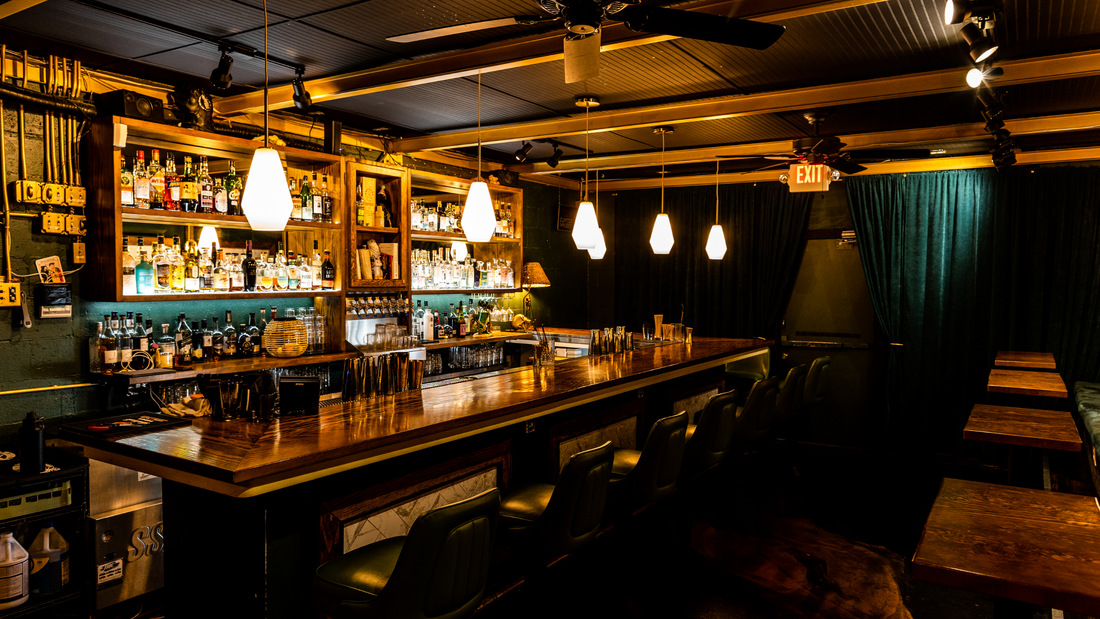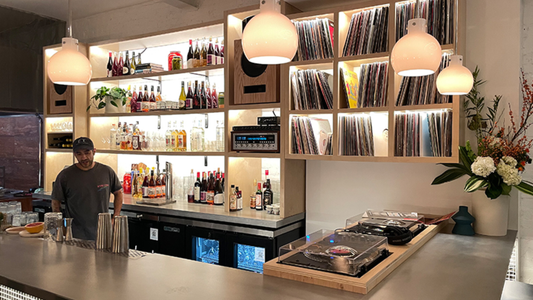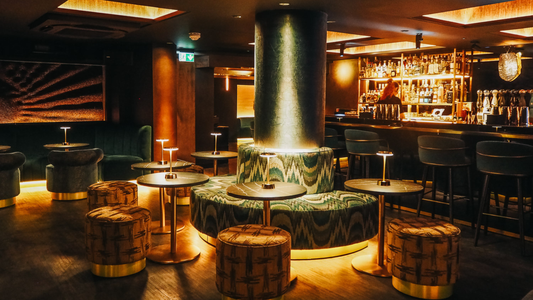
Mexico City: The Sound of Altitude
By Rafi Mercer
Mexico City listens differently because it lives at altitude. At over two thousand metres above sea level, the air is thinner, the rhythm slower, the sound more resonant. To walk through its streets is to feel history layered: Aztec foundations, colonial facades, modernist sprawl, all pulsing with life. And through it all, music threads the city together — mariachi on plazas, jazz in candlelit rooms, electronic pulses from rooftops. Yet in recent years, another voice has joined this chorus: the listening bar, a quieter sanctuary where vinyl, silence, and atmosphere converge.
To understand why listening bars make sense here, you have to feel the city’s intensity. Mexico City is vast, restless, never still. Its traffic hums like perpetual percussion, its markets chatter, its nightlife never sleeps. Yet amid this density, spaces of calm are treasured. Cafés have always provided refuge; cantinas offered ritual long before modern bars. The listening bar extends that lineage, only shifting the ritual from conversation to silence, from spectacle to sound.
Inside, the logic is familiar to those who know Tokyo’s kissa. The stylus drops, the chatter fades, and an album unfolds in full. But the mood is distinctly Mexican. The rooms carry warmth, wood, candlelight, hospitality. There is less austerity than in Berlin, less vertical urgency than in New York. Instead, there is a generosity of sound, a sense that listening is social even when voices are hushed. It reminds me of Austin, where performance and listening are part of the same continuum. Mexico City feels similar: a place where music lives in public, but silence can still be shared.
Vinyl here thrives as both archive and discovery. Record shops in Roma and Condesa stock not only reissues of Blue Note and Impulse but also treasures of Latin jazz, cumbia, bolero, and rock en español. Collectors cherish Japanese pressings of Coltrane as much as local reissues of Agustín Lara. This blend is what makes the city fascinating: global classics refracted through local heritage, imported fidelity mixing with indigenous rhythm. In London, vinyl feels historical; in Mexico City, it feels alive, still tied to dance floors and plazas.
The repertoire in its listening bars reflects that hybridity. One night might begin with Miles Davis’s Kind of Blue — the same album we celebrate in our listening bar albums shelf — before shifting into a local pressing of Pérez Prado, the horns bright, the percussion sharp. Another night might pair ambient textures with mezcal, proving that silence and ritual need not only belong to jazz. The curation feels global but rooted, as if the altitude itself insists that sound must be grounded.
There is also the role of drink, and here mezcal becomes central. Its ritual of slow sipping, smoky and elemental, pairs naturally with the slow culture of the record. We have written before about the pairing of whisky and listening, how spirit and sound amplify one another. In Mexico City, mezcal plays that role, binding ritual and atmosphere, turning a night of listening into a ceremony.
What fascinates me most is how listening here remains social even in silence. In Silence is a Luxury, I argued that stillness carries value in a culture of noise. Mexico City proves the point. When a record spins, the room stills, but the sense of community does not vanish. Listeners glance at one another, share a nod, sip together. It is silence as connection, not isolation.
Step outside after such a night and the city rushes back in — traffic pressing, vendors calling, neon flashing. But your ear is tuned differently. You notice the rhythm of footsteps on cobbles, the harmony of voices in markets, the syncopation of rain on roofs. The listening bar has recalibrated you, given you a way of hearing the city as music.
Mexico City belongs in the Atlas because it proves that listening culture is not only urban import but natural expression. Just as Tokyo refined silence, New York pressed permanence, and Berlin sharpened austerity, Mexico City brings generosity. It blends heritage and futurism, noise and quiet, local and global. It shows us that altitude is not only geography but listening — thinner air, deeper sound, slower rhythm.
The city does not just host listening bars. It breathes them.
Rafi Mercer writes about the spaces where music matters. For more stories from Tracks & Tales, subscribe, or click here to read more.







